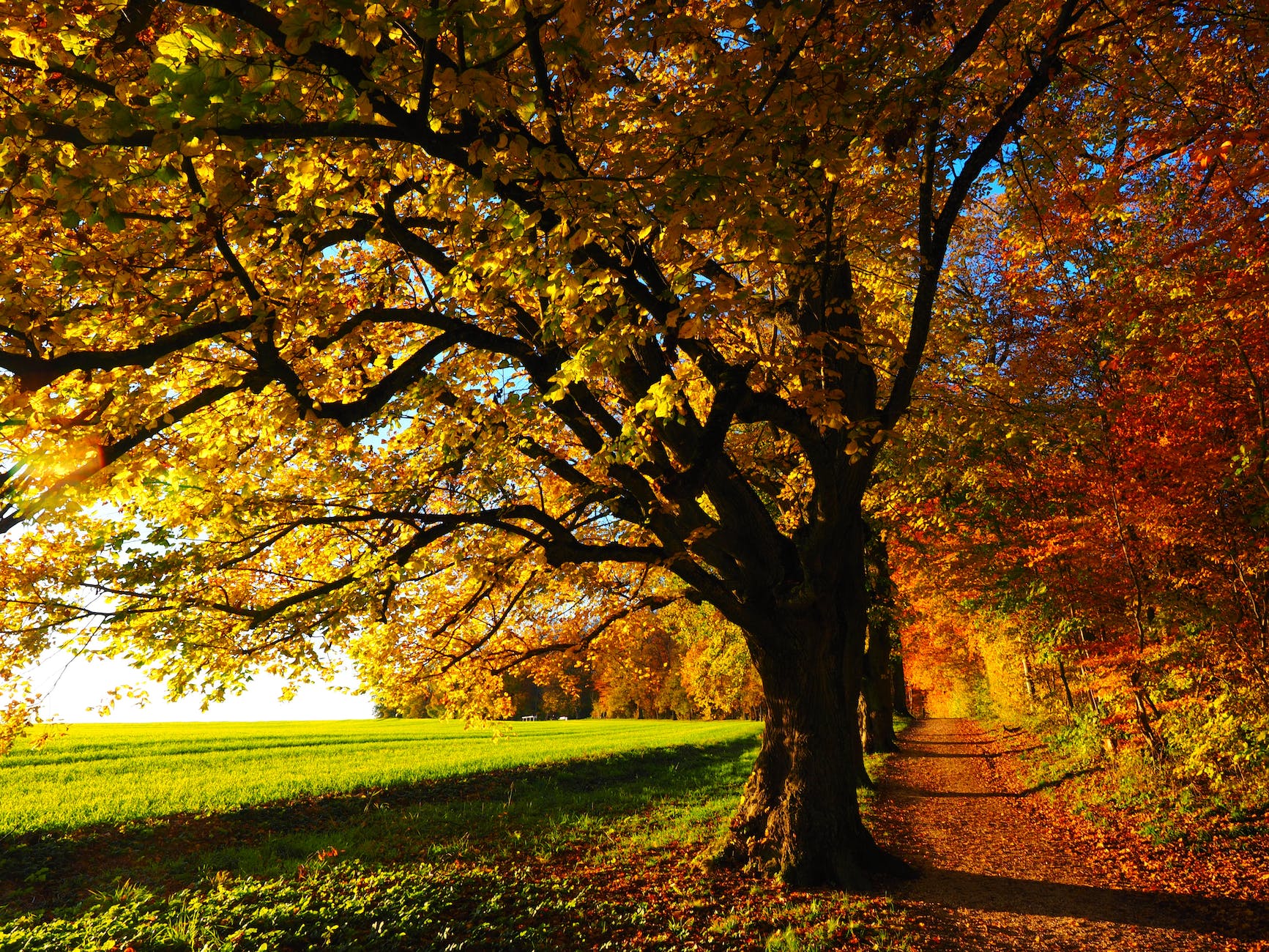
Autumn
Autumn is a beautiful season, like spring. At this time yellow, red, and orange leaves in tandem with the unique colors of landscapes are reflected in lakes and puddles, a thick fog covers the forest, and the sun sends to nature soft rays. All this creates a magical and cozy atmosphere. It inspires you to take a camera and go to beautiful autumn locations to make interesting photos for your personal album. But how best to convey all this atmosphere in a frame, if you have only the same scenes in your mind? In this article, we will share many tips for creating stunning pictures with you. And if you want to know how to make an image bigger during a macro shoot, or how to better set up the camera, read Skylum`s blog.
Work with the camera
Even if you aren’t a beginner, you need to learn useful life hacks for using the camera during shooting autumn landscapes. Here they are:
- Macro lens. Going to the shooting, put this optical device in your camera bag. It will help you deliberately make an image bigger to carefully consider small objects in detail. Thus, you can fix on the camera every spot of mushroom, leaf pattern, flower petals, dew-cowered cobwebs, and many other details of the amazing macrocosm. If you haven’t the macro lens, a close-focusing lens in the 50-105 mm range is a great alternative. Also, take the tarpaulin. You can lie on it while shooting to not get dirty with wet ground.
- Circular Polarizer. It’s a very useful instrument that improves colors and provides them with more intensity. It enhances the contrast, makes the sky bluer on sunny days, and helps to capture the picture of rivers and streams thanks to using of slower shutter speed. But you need to consider that the circular polarizer darkness the image with approximately 1.5 stops. So, you need to increase ISO.
- Telephoto lens. This device is suitable if you want to shoot more distant subjects: stones on the other side of a rock, leaves on the top of trees, or birds sitting on a branch. A 70-200 mm lens is an ideal option.
- The wide aperture is one of the key settings of the camera. It allows you to isolate one subject and create a soft, abstract background. It’s not difficult to get this effect. All you need to do is set the lens to f/2.8 or f/5.6, and then get in close and isolate leaves, a hedgehog, a bird, or another subject from its surroundings. Thus, you’ll get a more dynamic and expressive picture.
- Warm white balance settings. Auto white balance is good because you take a picture and that’s it. But in this case, you will not get more warm colors, which are inherent in autumn. However, you can achieve this effect with the help of increasing the Kelvin value to the higher one. But don’t overdo it. Too high value makes the color not natural.

Autumn
Sometimes to get a clear image without blurring during HDR photography or long exposures, you need a sturdy tripod. For example, during macro shooting, you can use a tripod with an articulating center column. It allows you to shoot low vantage points. Also, it’s necessary to take a raincoat for your equipment, as autumn weather is unpredictable.





